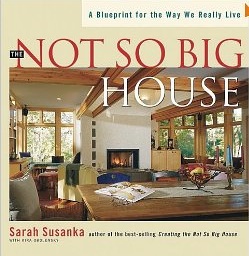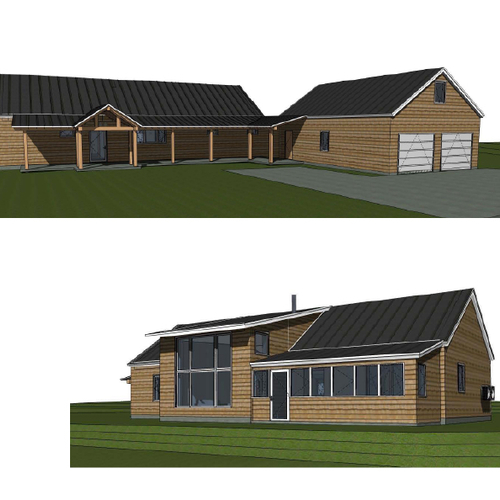
Sarah Susanka, in a talk at a recent meeting of the Green Building Council of the Greater Atlanta Homebuilders Association, was her usual, charming self. Sharing ideas from several of her nine best-selling books about right-sized, well-designed homes, she moved deftly from architectural details to new urbanism. One of her more interesting points was the value of following your personal passions. She discussed her transformation from architect to author, and how she discovered that writing was her passion. This point struck a chord with me, as I feel that after a twenty-five year love/hate relationship with the remodeling business, I have found my passion as a consultant. Susanka has managed to very successfully share her ideas with a huge audience through her publications, website, and an upcoming TV series. Similarly (and at a much smaller scale) I have been able to reach more people with my message of green building and remodeling as a consultant and curmudgeon that I would have had I remained a contractor. A side benefit is that I much prefer what I now do to building and renovating.
Not So Big Urbanism
As I mentioned in my earlier post on New Urbanism, many in that group have only recently come around to embracing green building, even though principles of both have often meshed together well. Similarly, Not So Big and green building, evolving almost simultaneously, having had a sort of under the radar relationship early on, are now happy partners in home building and remodeling. Coming full circle, New Urbanism and Not So Big are officially in bed together, according to one of the slides in Susanka’s presentation. She made the point that, in addition to wanting fewer McMansions, homeowners will be looking for more walkable neighborhoods in the future. Hopefully the smaller homes in those walkable places will all be high performance ones. If anyone can sell these ideas to the public, it is a best selling author like Sarah Susanka. As a friend sitting next to me during her talk pointed out, she is one of those people who could sell ice to Eskimos. Here’s hoping the people that listen to her are in a mood to buy what she is selling.
Weekly Newsletter
Get building science and energy efficiency advice, plus special offers, in your inbox.












4 Comments
Not So Big is harder than it seems...
It was definitely a great talk, Carl. One of the things she could have hit on, though, was how hard it is to do "not so big" even when you're trying. The house that I built started at under 400 square feet in the first drawing. Then it grew to 800, then 1200, then 1500, and, not quite finally, 1900+ square feet. After that, to put in that composting toilet we had our hearts set on, we had to put the house on a full basement, of course, so the final product ended up at over 3000 square feet. And we tried to keep it small!
Regarding following your passion, maybe 25 years was longer than necessary, but your considerable experience in building and renovating made you a better consultant. Newbies coming into the building science world without that kind of background are definitely at a disadvantage.
Evolution of growth
Hi Allison,
Could you give some details as to how your design evolved? I'm still at the planning stage of our own house design so any help would be appreciated.
looking back
We need to really look at where these movements or trends began. I would have to say that the true pioneers in small, sustainable and natural building can be found in intentional communities across the country. These isolated clusters of progressive untethered minds chose to think outside the building codes. In many cases retired engineers and local builders might come together to create off-the-grid homes that were energy efficient. Rural building officials tended to be more understanding of the "owner-built" pioneering vision of this early movement. I have to say that books written buy architects were not available in the 70's -80's.... only "back-to-the-land" and do-it-yourself type publications could be found. Today there are thousands of sources for inspiration and technical support that can be traced back to a movement rooted in the consept of living "lightly" on this planet!
1000sf for a composting toilet
means you should have hired a better architect.
i'm all for smaller houses, but susanka and 90% of the CNU projects have a terrible aesthetic...
it's kinkade for the homebuyer.
Log in or create an account to post a comment.
Sign up Log in